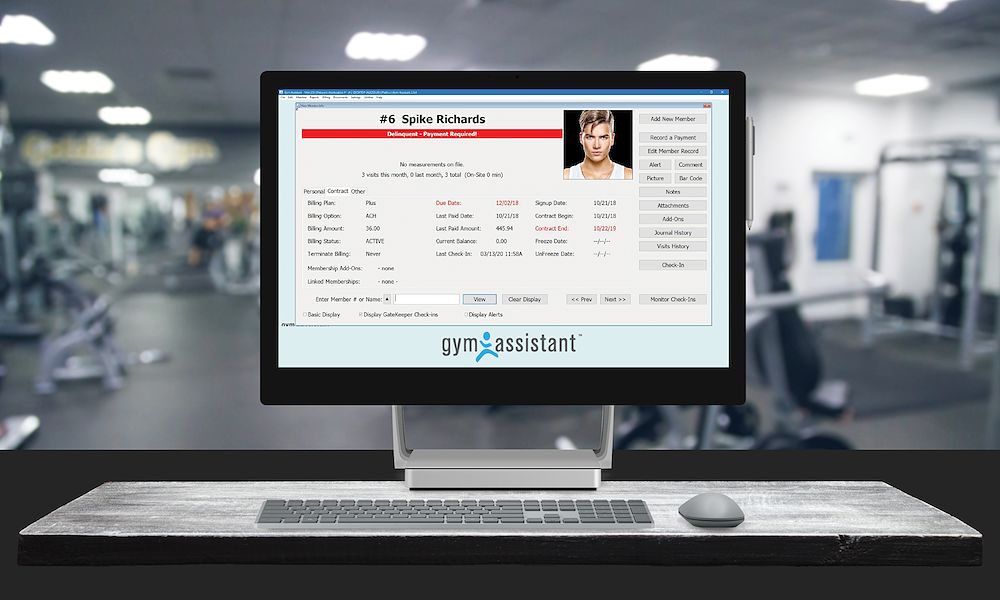How to Open a Gym in Illinois: A Comprehensive Guide to Success
Illinois, with its dynamic mix of urban hubs like Chicago and smaller, tight-knit communities, offers a thriving market for fitness entrepreneurs. Whether you’re opening a boutique studio, a full-service gym, or a specialized training facility, the state’s active and health-conscious population presents plenty of opportunities. However, launching a gym in Illinois requires strategic planning, compliance with local regulations, and the use of tools like gym management software to ensure smooth operations.
This guide will take you through the essential steps for opening a gym in Illinois, including tips on how to streamline your business with Gym Assistant.
Step 1: Research the Illinois Fitness Market
Illinois boasts diverse demographics, which means your gym’s offerings need to align with the preferences of your target audience. In larger cities like Chicago, boutique fitness studios and specialized gyms thrive, while suburban and rural areas might favor more traditional gyms with diverse equipment and services.
Questions to Answer:
- What type of gym is in demand in your area (boutique, general fitness, or specialty)?
- Who are your competitors, and how can you differentiate your gym?
- What is the fitness culture of the community you’re targeting?
Understanding your local fitness market will help you craft a concept that stands out and meets customer needs.
Step 2: Develop a Business Plan
A comprehensive business plan is the cornerstone of your gym’s success. It helps you clarify your goals and serves as a blueprint for daily operations and long-term growth. Your plan should include:
- Executive Summary: Your gym’s mission, vision, and goals.
- Market Analysis: Research on local demographics, competitors, and fitness trends.
- Services Offered: Define whether your gym will focus on general fitness, group classes, personal training, or niche offerings.
- Financial Projections: Include a detailed budget, startup costs, revenue forecasts, and break-even analysis.
- Marketing Plan: Outline strategies for attracting and retaining members.
- Operational Plan: Detail staffing needs, hours of operation, and membership pricing.
Step 3: Secure Funding
Opening a gym in Illinois requires significant financial investment. Costs include leasing or purchasing space, buying equipment, marketing, and staffing. Explore the following funding options:
- Small Business Loans: Many Illinois-based banks and credit unions offer loans tailored for startups.
- SBA Loans: The Small Business Administration provides funding for new businesses.
- Private Investors: Present your business plan to investors who share your passion for fitness.
Step 4: Choose the Right Location
Location is a critical factor in your gym’s success. Look for a space that aligns with your target audience’s needs and is easily accessible. Factors to consider include:
- Proximity to residential neighborhoods or business districts.
- Visibility and foot traffic.
- Adequate parking and public transportation access.
Ensure your chosen location complies with Illinois zoning laws and building codes for fitness facilities.
Step 5: Register Your Business and Obtain Licenses
To operate a gym in Illinois legally, you must register your business and secure necessary permits. Requirements include:
- Business Registration: Register your business with the Illinois Secretary of State.
- Local Permits: Check with your city or county for specific business licenses and zoning approvals.
- Health and Safety Compliance: Adhere to Illinois health and safety standards for fitness facilities.
- Liability Insurance: Protect your gym against claims related to injuries or accidents.
Step 6: Design Your Gym and Purchase Equipment
Your gym’s design and equipment play a significant role in member satisfaction. Invest in high-quality fitness equipment that aligns with your gym’s focus, whether it’s strength training, cardio, or group classes.
Tips for Gym Layout:
- Separate zones for cardio machines, free weights, and functional training.
- Dedicated spaces for group fitness classes or personal training.
- Member amenities such as locker rooms, showers, and a welcoming reception area.
Step 7: Hire and Train Staff
Your team is the backbone of your gym’s operations. Hire experienced and certified trainers, engaging group class instructors, and professional front-desk staff. Certifications from NASM, ACE, or ISSA are essential for fitness professionals.
Focus on building a team that aligns with your gym’s values and delivers excellent customer service.
Step 8: Implement Gym Management Software
Efficient operations are key to running a successful gym, and gym management software like Gym Assistant can make all the difference. Here’s how it helps:
- Membership Management: Track sign-ups, renewals, and attendance effortlessly.
- Automated Billing: Streamline payment processes and send reminders for overdue accounts.
- Data and Analytics: Gain insights into member trends, peak usage times, and revenue streams.
- Member Engagement: Use automated notifications to inform members about promotions, events, or updates.
Gym management software not only saves time but also enhances the member experience, helping you retain loyal customers.
Step 9: Market Your Gym
To attract members, you’ll need a robust marketing strategy that highlights your gym’s unique offerings. Some effective tactics include:
- Social Media Campaigns: Engage with potential members on platforms like Instagram and Facebook.
- Local Partnerships: Collaborate with nearby health and wellness businesses for cross-promotions.
- Community Events: Host open houses, fitness challenges, or charity events to connect with the community.
- Referral Programs: Encourage existing members to bring friends by offering incentives like discounts or free classes.
Step 10: Focus on Growth and Retention
Opening day is just the beginning. To ensure your gym’s long-term success:
- Regularly collect feedback from members and staff to identify areas for improvement.
- Update equipment and class offerings to keep up with fitness trends.
- Use gym management software to track retention rates and make data-driven decisions.
Conclusion
Opening a gym in Illinois is a rewarding endeavor that requires careful planning, strategic investments, and effective tools to manage operations. By researching the market, choosing a prime location, and leveraging gym management software like Gym Assistant, you can create a thriving fitness center that serves your community and stands out in the competitive Illinois fitness industry.
With the right approach and a commitment to excellence, your gym can become a cornerstone of health and wellness in Illinois.
At Gym Assistant we specialise in membership management software that is really easy to use – visit https://www.gymassistant.com/ for more!



